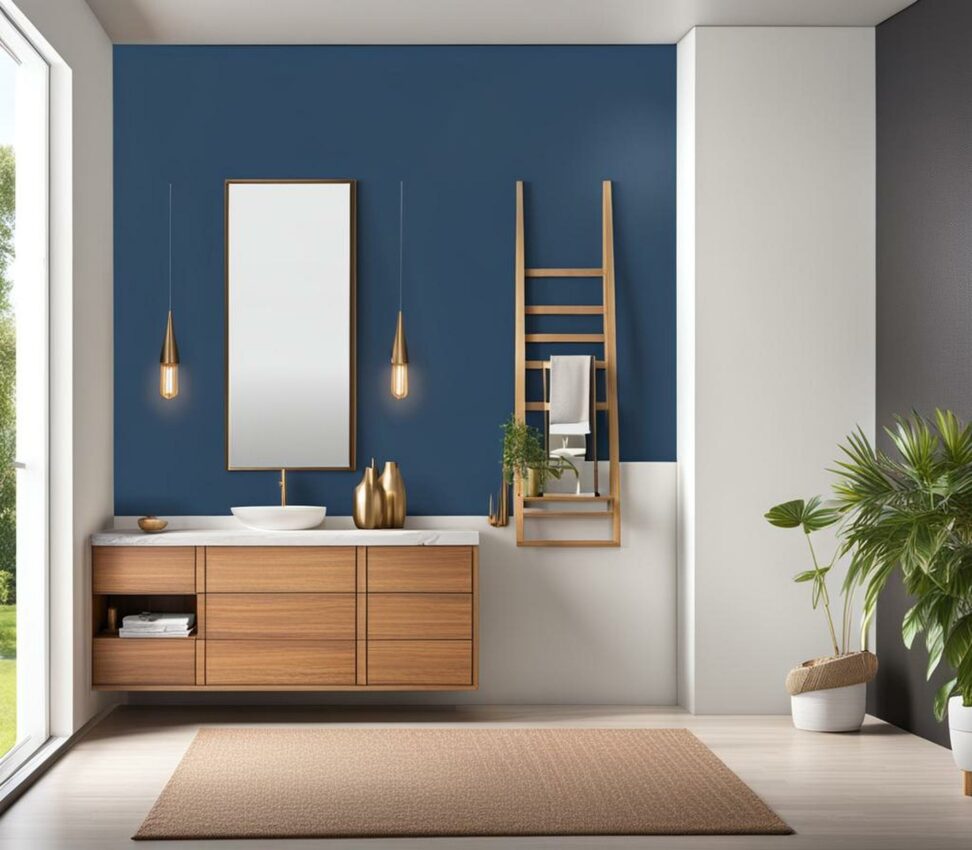Finally Understand the Key Differences Between Interior vs. Exterior Paint
Sarah was excited to give her living room a fresh new look. She headed to the hardware store and picked out a beautiful, bold red paint for the walls. Once she started painting, she quickly realized something was wrong. The paint seemed thin and watery. It took several coats to get decent coverage. Within months, the paint began cracking and peeling, leaving an unsightly mess on the walls.
Frustrated, Sarah went back to the store to figure out what went wrong. That's when she learned that she had accidentally purchased exterior paint instead of interior paint. While they may look similar, there are crucial differences between interior and exterior paint formulas.
Main Differences Between Interior and Exterior Paint
Interior and exterior paints are designed for very different purposes. Here are the key factors that set them apart:

Durability and Weather Resistance
Exterior paint contains resins and additives like urethanes, acrylics, and silicones to provide strong adhesion and flexibility. This allows exterior paint to expand and contract with temperature changes without cracking or peeling. Interior paint does not contain extra binders or additives to withstand outdoor elements.
Exterior paint is also formulated to resist moisture, humidity, and mildew. Rain, snow, and sun will damage interior paint that lacks weathering additives.
Chemical Composition and VOCs
The extra resins and polymers added to exterior paint require more solvents during production. This results in higher levels of volatile organic compounds (VOCs). Interior paint contains fewer VOCs since it will be used indoors where people breathe the air.
The strong solvents and VOCs used in exterior paint can cause headaches, dizziness, and irritation if used inside without proper ventilation.
Intended Use
Exterior paints are designed for outdoor surfaces like siding, fences, roofs, and outdoor furniture. Interior paints are intended for interior walls, ceilings, and trims.
Using the wrong paint leads to premature failure. Exterior paint will feel plasticky indoors. Interior paint exposed to the elements outdoors will deteriorate rapidly.
Key Characteristics of Exterior Paint
When properly formulated for outdoor use, exterior paint provides excellent protection and durability:
Provides UV Protection
Exterior paint contains UV absorbers and reflectors to prevent fading, chalking, and degradation from the sun's rays.
Moisture and Mildew Resistant
Special additives make exterior paint water-resistant. It can withstand rain, snow, and humidity without allowing moisture to penetrate the painted surface. Mildew-resistant ingredients prevent mold and mildew growth.
Textured Finishes
Exterior paints like elastomeric coatings feature bumpy, textured finishes. The thick texture helps bridge small cracks and provides an attractive decorative look. Textures also enhance durability by resisting water penetration.
Extreme Durability
Acrylic, urethane, and silicone additives allow exterior paints to maintain integrity despite expansion, contraction, and repeated water exposure. Exterior paint won't crack, peel, or deteriorate like interior paint when exposed to harsh outdoor elements.
Easily Cleaned
Dirt pickup resistance additives cause water to bead on the surface of exterior paint, preventing dirt adhesion. Power washing easily removes grime and pollutants.
Stronger Odor
The extra resins and solvents added to exterior paint give it a stronger odor than interior paints. Always use exterior paints in well-ventilated areas.
Key Characteristics of Interior Paint
Interior paint formulations cater to the controlled environment inside homes and buildings:
Variety of Textures
Interior paints allow homeowners to choose different finishes like flat, eggshell, satin, and high-gloss. Unique textures like Venetian plaster create one-of-a-kind looks.
Durability for Indoors
While interior paint isn't as hardy as exterior formulas, it still provides good washability and scrubbability for interior walls and trims. Additives provide stronger adhesion and durability than old, conventional paint.
Easily Applied
Interior paints brush on easily and spread well without dripping or splattering. Various sheens accommodate different application methods like spraying, rolling, and brushing.
Low Odor
Low VOC interior paint minimizes exposure to fumes and irritants when painting indoors. New air-purifying paint helps improve indoor air quality.
Extensive Color Options
Interior designers love working with interior paints since they offer unlimited color selection. Unique hues, deep colors, and bold accents express homeowners' personal styles.
Lower Cost
Because interior paint doesn't require the same weather-proofing resins and polymers, it costs less per gallon than heavier-bodied exterior paint.
Choosing the Right Paint
When selecting interior vs. exterior paint, it's essential to consider where it will be applied:
Exterior Paint Outdoors
Only use exterior paint on siding, trim, fences, and other outdoor surfaces. Exterior paint provides long-lasting protection exterior projects require.
Interior Paint Indoors
Reserve interior paint for walls, ceilings, trims, and other interior surfaces. Low-VOC interior paint is safer for indoor air quality.
Hire Professionals When Unsure
Professional painters are highly familiar with different paint formulations. They can recommend the best product for your specific interior or exterior painting project.
It's easy to grab the wrong can of paint without understanding the significant differences between interior and exterior formulas. Exterior paint contains resins, polymers, and additives to withstand sun, rain, wind, and temperature swings. Interior paint has lower VOCs and lacks weathering additives since it won't be exposed to outdoor conditions.
Using exterior paint indoors can cause health issues and fumes. Applying interior paint outside leads to quick damage, fading, and peeling. Now that you understand the unique characteristics of each type of paint, you can confidently choose the right product for your specific project.